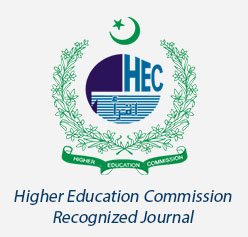Public Health Significance of Rotavirus Gastroenteritis
DOI:
https://doi.org/10.37962/jbas.v12i1.300Keywords:
Causative agent, Envelope, Gastroenteritis, Microscopy, Rotavirus, Reoviridae.Abstract
Background: Rotavirus is a type of virus that lacks the membranous layer (envelope); belonging to the family Reoviridae. Rotavirus derived its name from its characteristic appearance of a wheel like structure, as revealed by electron microscopy. This virus has been known for many years as the causative agent of inflamed stomach and intestines among children, which can spread by fecal-oral transmission and clearly exhibit itself with abdominal pains, increased urge to vomit, headache, feeling of discomfort, fever and severe diarrhea. Therefore, treatment of the infection is primarily targeted. There are two vaccines; Rotarix and RotaTeq, have been developed to stop the viral infection. The administration of Lactobacillus spp. is an additional treatment regime, to reduce the time of the severe stooling.
Objectives: To review and compare the public health consequences of rotavirus gastroenteritis around various communities.
Methodology: Detailed analysis of existing literature on rotavirus gastroenteritis together information on its structure, symptoms, pathology and treatment have been generated. All the relevant articles published from 1962 to 2020 were looked over numerous sources like Google Scholar, Medline, PubMed, Research Gate, Science Direct, Scopus and Web of Science.
Results: After due review, it was observed that rotavirus associated gastritis is most prevalent amongst infants and young children who come in contact with reservoirs and contaminants. The replacement of fluids and electrolytes remain the mainstay for its treatment. Vaccination, along with improved personal hygiene both for the infected and their care givers are the most important methods of preventing the transmission of rotavirus infections. It was also seen that some parts of Africa contributes the highest occurrence rates of rotavirus infections and that infant mortalities recorded annually that are associated with diarrhea are mostly caused by rotavirus.
Conclusion: Rotavirus is the most isolated agent associated with inflamed stomach and intestine (gastroenteritis) in infants and young children with high fatality rate, and it is very contagious. Frequent washing of hands must be encouraged especially in schools, day care facilities, hospitals and other public places to reduce its spread.

















